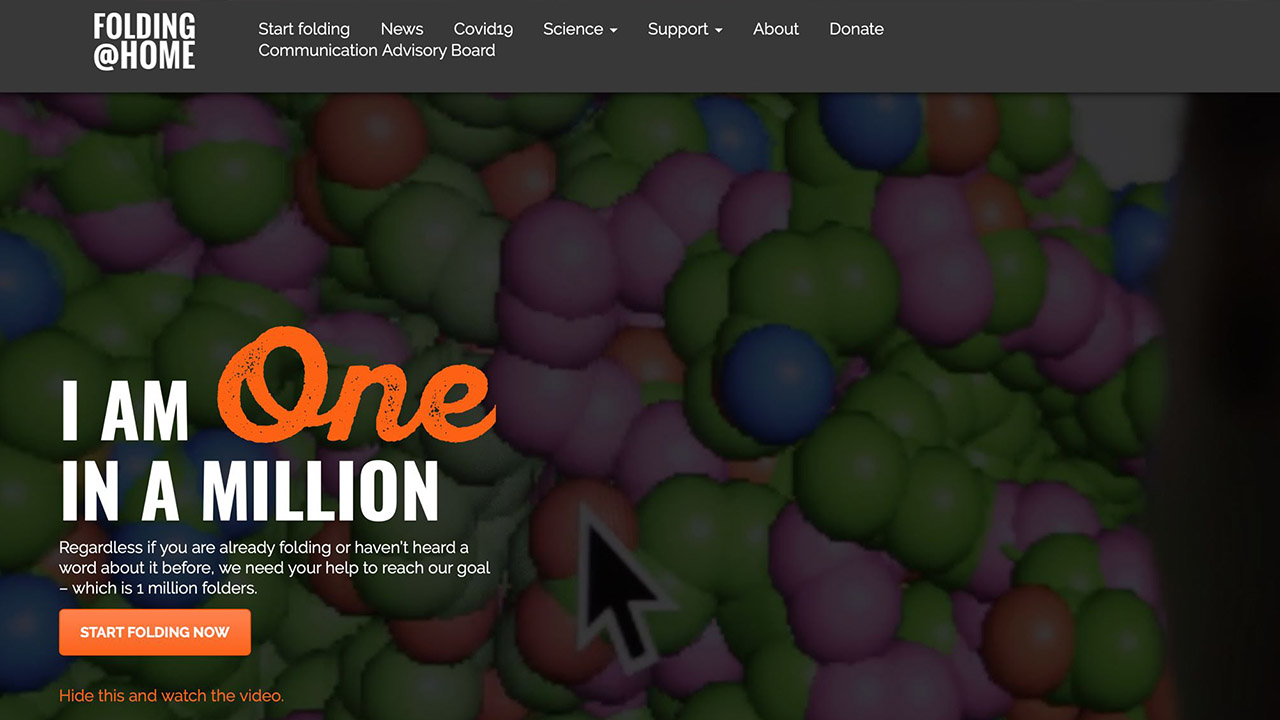
A group of University of Wisconsin-Platteville students and one alumnus have found a creative way to team up, while staying at home, to contribute to the fight against COVID-19. They formed a UW-Platteville team to contribute to the Folding@home project – a distributed computing project that relies on people around the world to volunteer their personal computer resources to run simulations of protein dynamics to help scientists find cures for diseases.
Students on the team include Derek Greenhalgh, a senior industrial technology management major from Platteville; Kevin Wuest, a junior software engineering major from Fond du Lac, Wisconsin; Jonas Wagner, a senior electrical engineering and engineering physics major from Oshkosh, Wisconsin; Jerrison Faulkner, a junior computer science major from Platteville; Tyler Vander Velden, a junior mechanical engineering major from Appleton, Wisconsin; and alumnus Jansen VanLin, who graduated in 2018 with a degree in manufacturing technology management.
In attempts to discover potential therapeutics or vaccines for viruses, scientists simulate the dynamics of viral proteins. However, to run every possible simulation is computationally intensive. The Folding@home project relies on the concept of distributed computing, which allows researchers to crowdsource computer power. Through the project, volunteers around the world run simulations on their personal computers and provide the data back to researchers, which is then used to develop cures for diseases.
While the Folding@home project has been in existence for nearly two decades, it gained a surge in popularity recently when organizers created simulations to specifically research COVID-19, which is the project the UW-Platteville team is working on.
“It has become hugely popular in the last couple of months,” said Faulkner, who was the first to learn about the project and get the team started. “The last I heard, the total processing power for Folding@home is more than the top seven super computers combined, and they have about 400,000 active people now versus the 20,000 they normally have. It has gained a lot of popularity recently.”
The process of folding at home is fairly autonomous, once the students complete the initial setup of the program.
“You can tell the software what part of your computer you want to use to actually do the work,” explained Greenhalgh. “We did some reading about what is most power efficient, because it does consume a lot of power and makes a lot of heat. Most of us are folding on graphics cards in our computers. Basically, we get the job, the computer crunches the numbers, sends it back and pulls a new job. It is fairly autonomous for us, other than monitoring it to make sure it doesn’t get stuck.”
The students explained the process gives them a lot of flexibility in the setup, from determining how much of their computer resources to use, to whether the computer runs simulations constantly or only when it is idle.
The Folding@home initiative tracks teams’ contributions to the project. The UW-Platteville team currently sits within the top 1,000 out of more than 250,000 teams worldwide.
Although most of the members on the team are new to this project, working together in the field of STEM is not new to them. The students are all members of the FIRST Robotics Team at UW-Platteville.
“As mentors for the FIRST Robotics Team, we work with high school students in building, programming, designing and ultimately competing with a robot,” said VanLin.
In the absence of being able to do their typical STEM outreach with the community during the pandemic, the Folding@home project offers them a new way to continue to contribute to the field of STEM and society at large.
“I’ve been thinking about what I can do to help from home, and this is the biggest thing I could think of to be helpful right now,” said Greenhalgh.
In addition to the Folding@home project, Vander Velden is using his 3D printer to make ear savers and masks. “I ran my 3D printer for a week and a half almost solid, as long as I’ve been awake,” said Vander Velden. “So far I’ve made almost 500 ear savers.”
The students agreed that it is gratifying to potentially play a part, no matter how small, in helping to combat a global pandemic.
“I am not very good at biology, but I know how to use computers,” said Wagner. “Being able to provide the resources for the researchers who are developing vaccines and different resources is definitely very good.”
The students welcome others who are interested to join their team’s efforts in folding at home. For more information, contact Firstteam171@gmail.com.